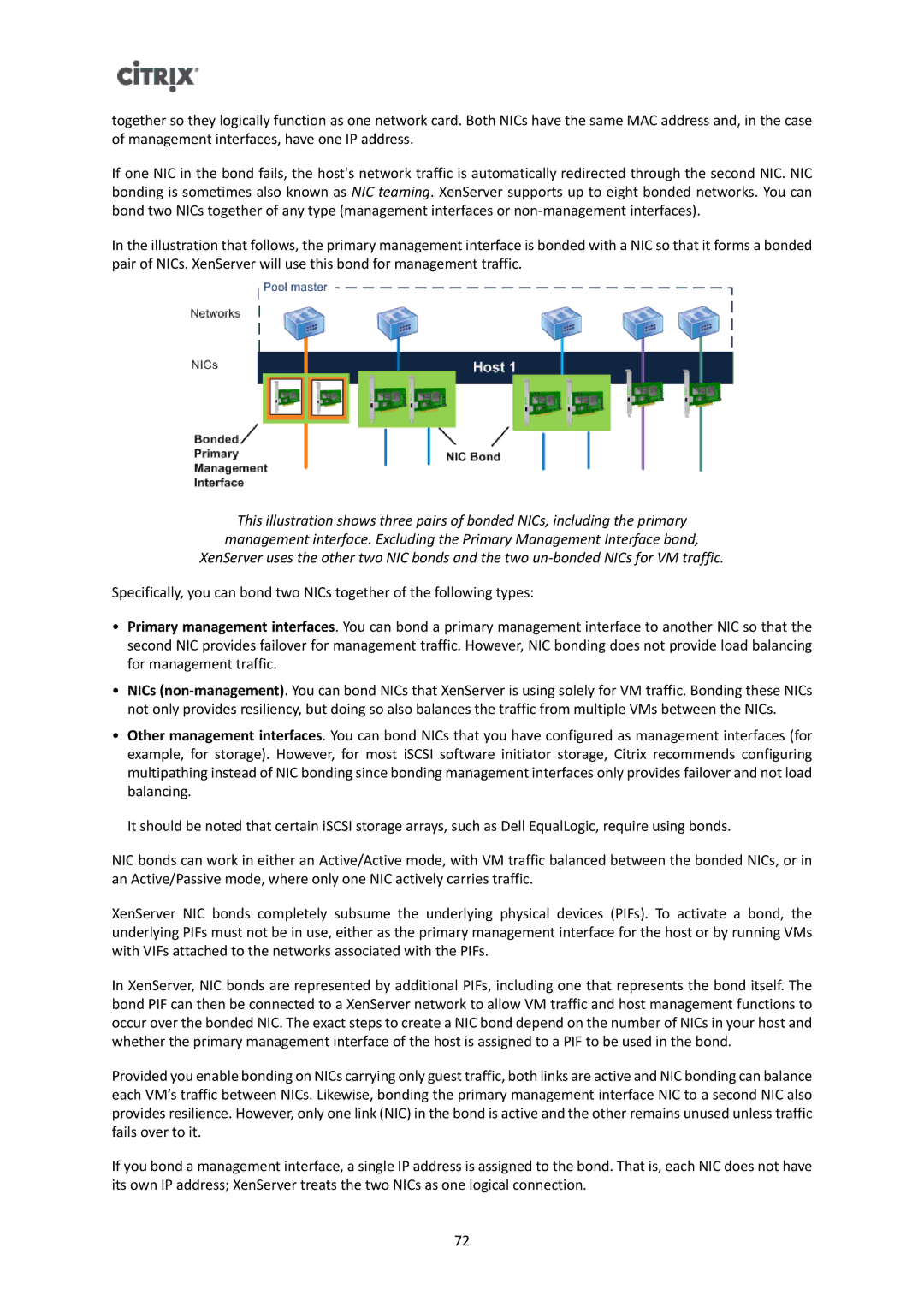
together so they logically function as one network card. Both NICs have the same MAC address and, in the case of management interfaces, have one IP address.
If one NIC in the bond fails, the host's network traffic is automatically redirected through the second NIC. NIC bonding is sometimes also known as NIC teaming. XenServer supports up to eight bonded networks. You can bond two NICs together of any type (management interfaces or
In the illustration that follows, the primary management interface is bonded with a NIC so that it forms a bonded pair of NICs. XenServer will use this bond for management traffic.
This illustration shows three pairs of bonded NICs, including the primary management interface. Excluding the Primary Management Interface bond, XenServer uses the other two NIC bonds and the two
Specifically, you can bond two NICs together of the following types:
•Primary management interfaces. You can bond a primary management interface to another NIC so that the second NIC provides failover for management traffic. However, NIC bonding does not provide load balancing for management traffic.
•NICs
•Other management interfaces. You can bond NICs that you have configured as management interfaces (for example, for storage). However, for most iSCSI software initiator storage, Citrix recommends configuring multipathing instead of NIC bonding since bonding management interfaces only provides failover and not load balancing.
It should be noted that certain iSCSI storage arrays, such as Dell EqualLogic, require using bonds.
NIC bonds can work in either an Active/Active mode, with VM traffic balanced between the bonded NICs, or in an Active/Passive mode, where only one NIC actively carries traffic.
XenServer NIC bonds completely subsume the underlying physical devices (PIFs). To activate a bond, the underlying PIFs must not be in use, either as the primary management interface for the host or by running VMs with VIFs attached to the networks associated with the PIFs.
In XenServer, NIC bonds are represented by additional PIFs, including one that represents the bond itself. The bond PIF can then be connected to a XenServer network to allow VM traffic and host management functions to occur over the bonded NIC. The exact steps to create a NIC bond depend on the number of NICs in your host and whether the primary management interface of the host is assigned to a PIF to be used in the bond.
Provided you enable bonding on NICs carrying only guest traffic, both links are active and NIC bonding can balance each VM’s traffic between NICs. Likewise, bonding the primary management interface NIC to a second NIC also provides resilience. However, only one link (NIC) in the bond is active and the other remains unused unless traffic fails over to it.
If you bond a management interface, a single IP address is assigned to the bond. That is, each NIC does not have its own IP address; XenServer treats the two NICs as one logical connection.
72
